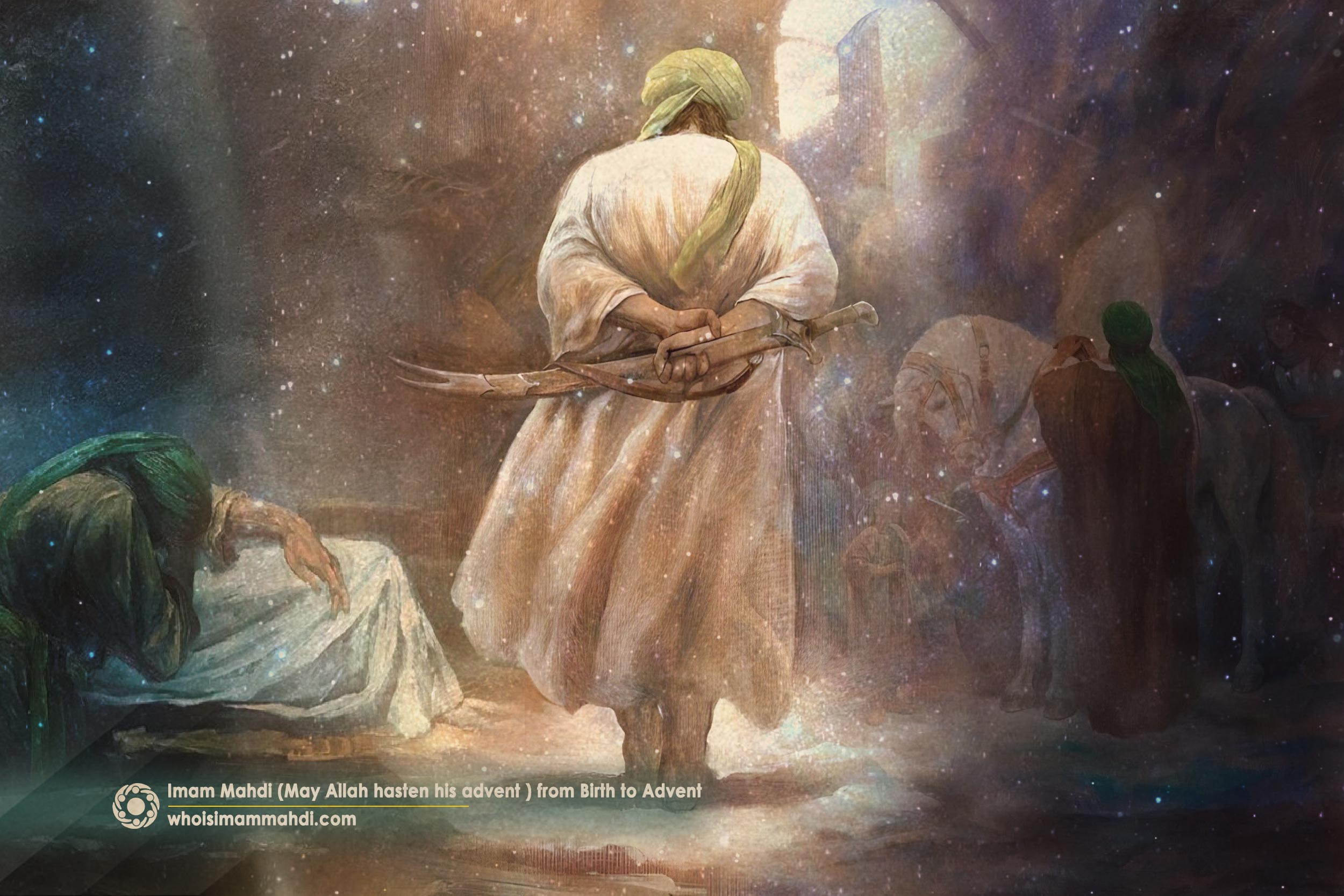An Overview of the Imamate Era of Imam Sadiq (PBUH) and His Achievements
Imam Ja’far al-Sadiq (PBUH) is the sixth Imam of the Twelver Shia. He is the son of Imam Baqir (PBUH) and led the Shia community for about thirty-four years.
Since his Imamate lasted for a long time, it coincided with the rule of both the Umayyad and Abbasid dynasties. Imam Sadiq’s life overlapped with the caliphates of the last ten Umayyad caliphs and the first two Abbasid caliphs, al-Saffah and al-Mansur. The conditions of his Imamate differed under these two different caliphates. Consequently, he acted according to the circumstances of each period.
The first eleven infallible Imams held the position of Imamate for approximately 250 years in total. Each of them, working under unique circumstances, carried out various actions with a shared goal: to lay the groundwork for the establishment of the global government of the Twelfth Imam, the awaited Mahdi. Each member of the Ahl al-Bayt (PBUT) contributed their part to this preparation; they tailored their activities to the specific conditions of their time, gradually moving closer to the realization of the divine civilization of the Mahdi.
After years of tireless effort by Imam Baqir (PBUH) to awaken the tendency to acquire knowledge in people whose spirits had grown stagnant, it was Imam Sadiq’s turn. Imam Sadiq (PBUH) nurtured the seeds planted by Imam Baqir (PBUH) and revived an era of intellectual and scholarly brilliance within Shia Islam. Imam Sadiq (PBUH) lived during a time when he had to simultaneously manage and guide various matters, such as intellectual and cultural movements, overseeing different sects, dealing with the uprisings of the descendants of the Imams, and having proper interactions with the ruling governments.
During the time of his Imamate, the ugly face of the Umayyad Dynasty was exposed, and they were on the decline. Therefore, the Imam openly stood against them and revealed the truth about them. After the Umayyads, the Abbasids came to power with an apparently justified face, and it needed time to expose their double dealings. The Abbasid leaders had been with the Imam for years and were aware of his secrets and goals. They knew his companions and were aware of Imam Sadiq’s (PBUH) power. They kept a close watch on the Imam, fearing his influence. Their persecution made his life incredibly difficult, forcing him to live under constant restriction and in exile.
The Achievements of Imam Sadiq (PBUH) during his Imamate Period
The various matters that Imam Sadiq (PBUH) had to carry out simultaneously included: a cultural and intellectual movement, standing and clarifying against seditions and false ideologies and sects, controlling and guiding the uprisings of descendants of the previous Imams towards the righteous path, and exposing the hypocritical face of the Umayyads and Abbasids. We will examine each of these topics separately.
Cultural and Intellectual Movement
The era of Imam Sadiq (PBUH) was a time of cultural movement. As we mentioned, thanks to the efforts of Imam Baqir (PBUH), an extraordinary thirst for knowledge had been created in the Islamic society. People had many questions and were eager to learn. Not only were religious studies such as the science of reading the Quran, interpreting the Quran, Islamic jurisprudence (fiqh),[1] hadith studies, and Ilm al-kalam (theology) at the forefront, but natural sciences like mathematics, philosophy, medicine, chemistry, and astronomy were also beginning to flourish. During these years, the Imam was able to train about four thousand students in various fields of knowledge and nurture great scholars such as Jabir ibn Hayyan, Zurarah ibn A’yun, and Mu’adh ibn Kathir. About seventy percent of Shia hadiths are narrated from Imam Sadiq (PBUH). The Imam’s method of teaching and explaining the foundations of religion was such that a rational and logical approach to understanding the verses of the Quran and the practices of the Prophet (peace be upon him and his family) was encouraged and developed, standing in stark contrast to emotional, deceptive, and exaggerated approaches.
Most Shia hadiths are narrated from Imam Ja’far Sadiq (PBUH), and that is why the Twelver Shia is called the Ja’fari sect. He made every effort to revive the Shia school of thought and explain the position of Imamate to people. Imam Sadiq (PBUH) revealed the shrine of Imam Ali (PBUH), which had been hidden for years, and strived to keep alive the memory of Imam Hussain’s unjust martyrdom. The efforts of Imam Sadiq (PBUH) among the jurisprudential and scholarly community of that time helped to prove the superiority of the Ahl al-Bayt (PBUT); however, it is important to note that, due to the restrictive political climate, he was unable to teach in a normal classroom setting. People usually asked him their questions during various meetings, such as the pilgrimage to Mecca.
Confronting and Exposing the Truth about False Schools of Thought and Sects
During that time, many deceitful people claimed to be the scholars of Islamic jurisprudence and answered people’s religious questions. Their fatwas[2] were unreliable and based on fabricated hadiths and personal opinions. There were many claimants to jurisprudence during this period, and each city was controlled by someone who claimed to be an expert in Islamic law and created a new religion. The schools of thought headed by Abu Hanifa, Malik ibn Anas, Ibn Idris Shafi’i, and several others were among the jurisprudential schools of this period, some of which still exist today with their own followers.
During this period, intellectual life was captivated by lively discussions, debates, and even heated arguments concerning “Ilm al-kalam”– the exploration of Islamic theological principles–[3] surpassing the interest in Quranic and jurisprudential studies. These conditions led to the emergence of various sects such as the Ghulat,[4] Mu’tazila, Zaydiyya, and others. The era of Imam Sadiq (PBUH) was a special time, since the society had turned from the tendency to killing Imams and materialism towards knowledge and scientific debates. While this was a positive development, it was also worrying, as new sects and schools emerged every day from different regions, creating new problems for the Imam and requiring his attention and care. For example, the Zindiq sect, a deviant and dangerous group, was present everywhere with government support and engaged in creating misconceptions, raising doubts among Muslims, fabricating hadiths, translating misleading books into Arabic, and spreading them. In such circumstances, the Imam had to answer people’s questions and neutralize the misleading actions of these sects.
Controlling and Guiding the Uprisings of the Descendants of the Infallible Imams towards the Right Path
During the time of Imam Sadiq (PBUH), many descendants of the infallible Imams revolted against the Abbasids, including Muhammad al-Nafs al-Zakiyya, Zayd ibn Ali, Abu Muslim, and Abu Salamah who were among the critics and rebels.[5] They did not seek permission or approval from the Imam of their time, i.e., Imam Sadiq (PBUH), for their uprisings, but rather they invited him to participate. The Imam did not consider the conditions suitable for an overt military uprising and knew that he did not have a large number of loyal followers, even as many as the sheep in a flock![6] On the other hand, the Abbasids were waiting for such a move from Imam Sadiq (PBUH) so that they could finish him off and eliminate the Shia. Therefore, the Imam declined to join the uprisings openly, but he generously provided them with covert support.
The frequent, adventurous, and destructive uprisings of the Imams’ descendants inflicted irreparable damage on Shia Islam. These uprisings were very costly for the Shia, undermined Shia unity, and resulted in great disrespect for the Imam. A significant part of Imam Sadiq’s efforts and strategies was devoted to managing and confronting those descendants of the infallible Imams who wanted to revolt based on their own understanding. Given the Imam’s position as a guide and authority, it begs the question: Why did these individuals feel compelled to take the lead, rather than follow the Imam?
Revealing the Deceitful Face of the Umayyads and the Abbasids
The Imamate of Imam Sadiq (PBUH) coincided with a period of weakness and decline for the Umayyad Dynasty. The Imam boldly asserted the right of himself and his ancestors, going back to Imam Ali (PBUH), to lead the people. He provided clear evidence and explanations to justify this claim. This movement was very effective in exposing the truth about the Umayyads and led to their downfall. The Imam had more freedom during the Umayyad era, being able to provide more serious teachings in a relatively more comfortable situation. However, during the Abbasid period, Imam Sadiq’s (PBUH) situation became much more difficult. He faced greater challenges and limitations in frequent exile and confinement, as he struggled against them.
The Role of Imam Sadiq’s Network of Delegation in Civilization-Building
During the Imamate of the sixth infallible Imam, the Shia population had grown significantly and become widely dispersed. This necessitated a well-structured system for Imam Sadiq (PBUH) to manage and organize his followers.[7] While Imam Sadiq (PBUH) is renowned for his profound knowledge and expertise in Islamic jurisprudence, he also took important initiatives to combat oppression and build a powerful civilization. We know Imam Sadiq (PBUH) solely as a scholar and debater, this is while his struggles and the network he created are often overlooked![8]
The Imam had discreetly organized a hidden system and took control of Shia affairs. Unlike many other Hashemites[9] of his time, he prioritized deep and covert organizational activities over open military conflict. He appointed trustworthy delegates in various regions of the world. These individuals were secretly stationed in different places and conveyed to people everything approved by the Imam. They were considered the Imam’s delegates and were responsible for any matter related to the Imam in that region.[10]
Imam Sadiq’s organizational and propagation network played a crucial role in correctly explaining the concept of Imamate to people. It also clarified the rightful claim of Imam Ali and his infallible descendants (PBUT) to Imamate. While the activities of this network became even more powerful and formalized under subsequent Imams, it was Imam Baqir and Imam Sadiq (PBUT) who laid the foundation for this effective management style. Imam Sadiq’s secret network was a form of non-violent, soft war against the oppressive governments of his time. The aim was to gradually, peacefully, and strategically restore power to its rightful owners, that is, the Prophet’s Household. This newly established network of delegation aimed to pave the way for the inconspicuous increase of Shia Muslims and prevent the enemy from finding excuses to persecute and harm them.
As Imam Sadiq (PBUH) was closely monitored, he was forced to avoid discussing certain issues publicly. This led him to more deeply and seriously undermine the foundations of the Abbasid dynasty through his organizational efforts. Imam Sadiq (PBUH), like a skilled commander, employed effective organizational tactics to create a suitable foundation for the next Imam to continue his mission.
[1]. Sayyid Hashim Al-Musawi, A Course in Islamic Jurisprudence – Manhajul Fiqhil Islami. Tehran: Department of Translation & Publication, 1997, p. 7.
[2] . In Islam, a fatwa is a formal ruling or interpretation of Islamic law issued by a qualified legal scholar.
[3] . Murtadha Mutahhari, “An Introduction to Ilm al-Kalam,” trans., Ali Quli Qarai, in Al-Tawhid Islamic Journal, vol. 3, no. 2.
[4]. The Ghulat, or extremists, are individuals who attribute divinity or prophethood to Imam Ali (PBUH) and his descendants, and they go to extremes in describing them.
[5] . Rasul Ja’fariyan, Imam Sadiq: Role Model for Humanity, Part 2, trans., Fatemeh Soltanmohammadi, in Message of Thaqalayn (Spring 2015), vol. 16, no. 1. pp. 12-13.
[6] . Muhammad Al-Kulayni, Kitab Al-Kafi. Tehran: Dar Al Kutub Al Islamiyah, vol. 2, p. 152.
[7] . Mohammad Reza Jabbārī, Sāzmān-i wikālat-i aʾimma, vol. 1, pp. 47-50.
[8]. Ali Khamenei, A 250-Year-Old Person. trans., The Ahl al-Bayt (as) World Assembly, 2014, pp.282.
[9]. The Banū Hāshim is a prominent Arab clan within the Quraysh tribe. They are known as descendants of Hashim ibn Abd Manaf, the great-grandfather of the Islamic Prophet Muhammad (PBUH). Members of this clan, particularly their descendants, are also called Hashimids, Hashimites, Hashemites, or Bakara, and often carry the surname al-Hāshimī. Those who can trace their lineage back to Prophet Muhammad (PBUH) through his daughter Fatima hold the esteemed title of Sharīf, often considered equivalent to Sayyid.
[10]. Jabbārī, Sāzmān-i wikālat-i aʾimma, vol. 1, pp. 280, 320, 322.






































































